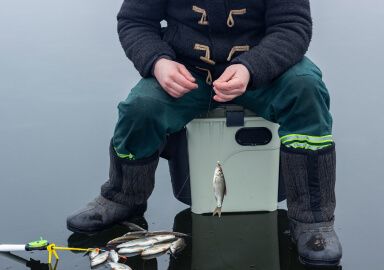Queenfish
The name Queenfish can refer to a number of species, most notably a group of top predators found in the clear, warmer waters of the Indo-Pacific area.
View 31 listings
31
listings
–
price starting from
3
countries
–
to the nearest trip
Where and When?
Most species of queenfish inhabit the warmer areas of the eastern Indian and Pacific Oceans. The slender queenfish is a fish of coastal areas and estuaries, from the Red Sea southwards to South Africaname and then eastwards to Australia. Other species are mostly coastal, but more “open water”. Their distribution is eastwards from the Red Sea and South Africa, with some reaching as far east as Hawaii, north to Japan and also south to Australia.
All Scomberoides queenfish are “sight feeders” and need clear water in which to hunt – they often favour patrolling reefs and wrecks. They usually remain close to the surface, but the talang queenfish can reach depths of 100 m. (350 ft.). Top queenfish fishing destinations are around northern Australia and the east coast of South Africa. These queenfish can be caught throughout the year in more tropical areas, but mostly in summer in the more temperate waters. As sight feeders they are mostly caught in daylight.
The American queenfish inhabits the eastern Pacific Ocean, including the American Pacific seaboard from Oregon to Baja California. It is not common and usually caught from piers and jetties. It can be caught throughout the year, but usually in small numbers and during daytime.
About Queenfish
Queenfish is one of the names that people use to call a number of species all over the world. In the context of recreational fishing, it usually refers to one of the five species of the Carangidae family - the jacks and trevallies. All are similar in shape, being elongate and very laterally compressed, darker above and silvery below, often with a series of large, dark spots along the flanks. The queenfish have very small scales with sharp points and their tail fins are deeply cleft. They vary in size from the largest, Scomberoides commersonianus, the talang queenfish, reaching 120 cm. (47 in.) and 16 kg. (35 lbs.) to S. tol, the slender queenfish, attaining 60 cm. (24 in.) and 1 kg. (2.2 lbs).
The Indo-Pacific queenfish are top predators of tropical and subtropical marine waters, from estuaries to open ocean, with juveniles often residing in estuaries for extended periods. Young feed mostly on invertebrates and small fish, while adults eat a wide variety of organisms, but mostly smaller fish. There is usually a general offshore movement as the fish mature.
Yet another species that recreational anglers call queenfish is the American queenfish, Seriphus politus, found on the western coast of the USA and Mexico. It is a small, with maximum length of about 30 cm. (11.8 in.), member of the Scianidae family that unites drums and grunts. The American queenfish are elongate and compressed, blue to grey on top and silver below, with a row of sharp teeth; they feed mostly on invertebrates.
How to Catch?
The queenfish found in the Indo-Pacific areas, that is, Scomberoides queenfish, can provide excellent sport fishing and can be caught using spinners, by bait fishing and also on the fly. Most are caught from the shore, mostly from rocky shores, as it is difficult to target queenfish from boats.
Many queenfish cruise the shoreline seeking possible food items, particularly as the tide comes in, and can be caught by casting carefully into turbulent waters and retrieving rapidly. Casting light spinners, plastics or your fly at good looking areas can be productive and exciting. Most queenfish caught around South Africa or Australia are not particularly big, but occasionally a large talang queenfish suddenly appears and then “all hell breaks loose”.
The most suitable tackle to catch American queenfish is light spinning tackle as the fish do not grow large. They are often caught on natural baits or, occasionally, on soft plastics, typically by fishing structures such as harbours and jetties or from the shore.







